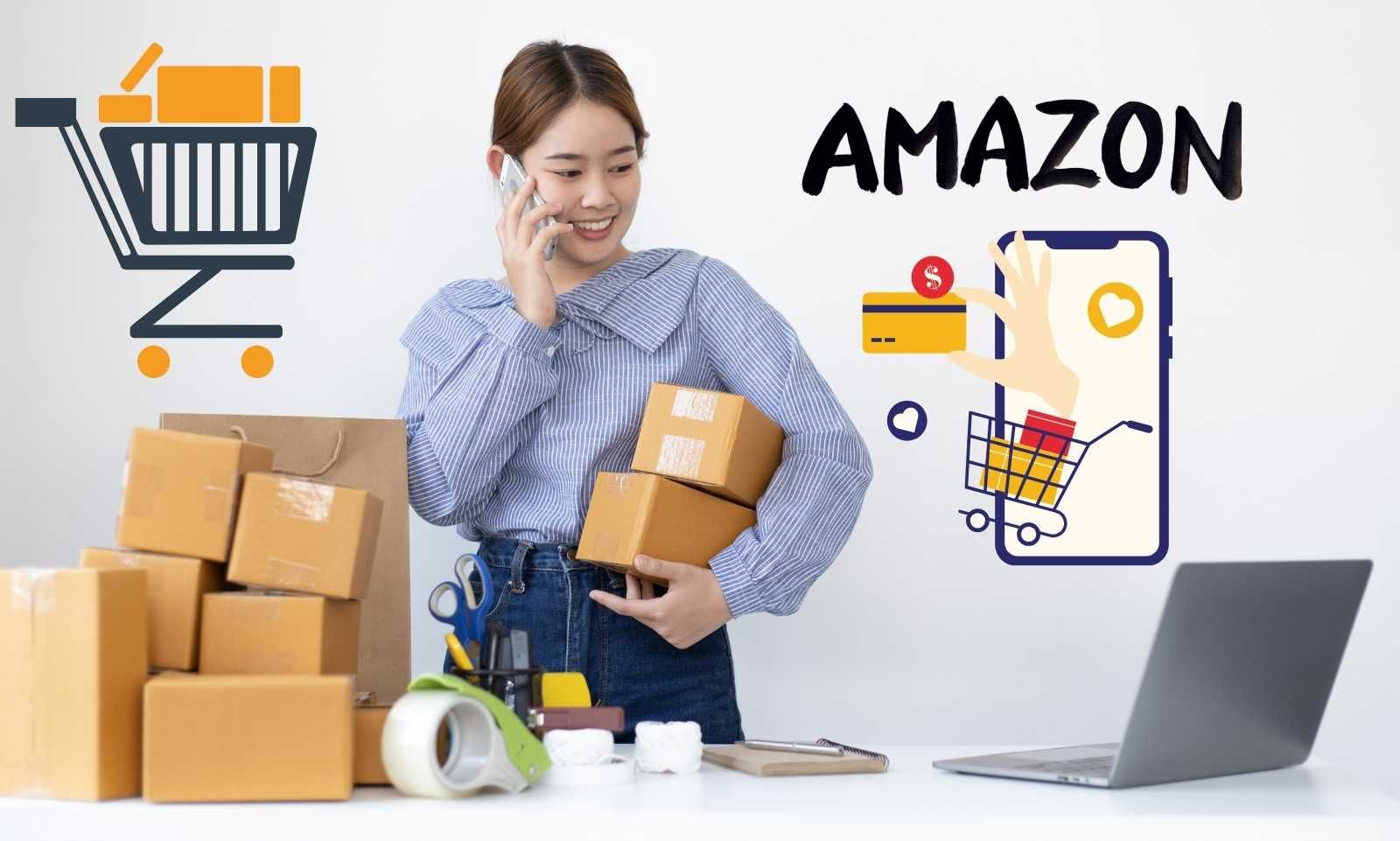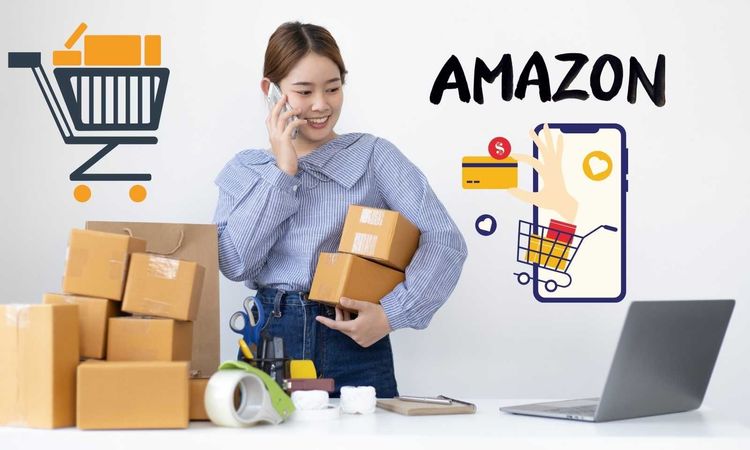Businesses must plan their finances while understanding Amazon's different expense structures before starting their operations on the platform. Amazon provides various selling choices that enable entrepreneurs with diverse capital levels to start their businesses on the platform. Strategic cost management is decisive in Amazon's success because every platform decision directly affects profitability and long-term sustainability.
What Affects Your Amazon Selling Costs?

The expenses related to selling on Amazon are determined by three essential elements: product selection, fulfillment approach, and sales volume. Successful sellers track their costs precisely and track fixed and variable expenses through seasonal changes to guide business development and operational choices.
Monthly Subscription Fees
Amazon provides two selling plans that match business sizes through Individual and Professional selling options. Individual sellers on Amazon need to pay only $0.99 for each sale they complete without any monthly subscription requirement. Professional sellers must spend $39.99 monthly to obtain advanced tools and features that provide full inventory management, detailed reporting, and advertising options.
The Professional plan proves economically advantageous when sellers reach 40 monthly items because it removes per-item costs, enhancing profit potential in competitive market segments.
FBA Fees
Fulfillment by Amazon (FBA) is a complete solution that manages storage space, packing services, shipping logistics, customer service support, and return processing. The fee structure is based on product size and weight, with small standard items typically costing between $2.92 and $3.70 for fulfillment, while larger standard items range from $3.63 to $4.75.
Storage fees follow seasonal patterns. During regular months (January-September), they charge $0.75 per cubic foot; during holiday months (October-December), they increase to $2.40 per cubic foot. At the same time, items stored beyond 365 days incur additional long-term storage fees of $6.90 per cubic foot or $0.15 per unit.
FBM Fees
The Fulfillment by Merchant (FBM) model gives sellers greater control over their operations while requiring significant infrastructure investment, including dedicated storage space and systems for processing daily orders and managing customer inquiries.
Many successful sellers strategically combine FBA and FBM in their business models. They typically use FBM for larger items that are expensive to ship through FBA while leveraging Amazon's fulfillment services for fast-moving products that benefit from Prime eligibility.
Referral Fees
Amazon's referral fees represent its commission structure, which varies by product category but typically amounts to 15% of the total sale price. Specific categories have distinctive rates, such as electronics at 8%, jewelry at 20%, and Amazon devices at 45%. Minimum referral fees are established for each category—usually $0.30.
However, some categories, like jewelry, require a minimum of $2.00 per item. These fees are calculated based on the total sale amount, including the product price, shipping costs, and additional services like gift wrapping.
Customer Returns Fees
The profitability of businesses is influenced by returns, especially among FBA sellers who face payment of both their original fulfillment fee and return processing expenses. The return percentage differs substantially between product categories because clothing returns reach 20-30%, electronics return at 10-15%, and books return at 5-10%. Sellers must include potential costs within their pricing strategy and maintain ongoing return reason analysis to enhance product descriptions for reduced return rates.
How Much Money Do You Need to Get Started Selling on Amazon?
Initial investment requirements vary based on your chosen business model and product category, encompassing several key cost components that need careful consideration.
Inventory Costs
Inventory typically represents the largest initial investment for Amazon sellers, with suppliers often requiring minimum orders of 500-1000 units per SKU. Product costs can vary significantly, with private label products typically costing $2-5 per unit and wholesale items costing $5-20 per unit. Quality control measures, including sample orders ($100-300) and testing procedures, are essential investments that ensure product reliability and customer satisfaction.
Product Photoshoots

High-quality product photography is crucial in driving conversion rates on Amazon, with basic product photos costing $30-50 each and lifestyle shots ranging from $100-200. Most listings require multiple images to showcase various product aspects, with Amazon allowing 7-9 photos per listing, each serving a specific purpose in the customer's decision-making process.
Advertising Costs
Amazon PPC advertising has become increasingly important for product visibility and sales growth, particularly for new listings and competitive categories. Daily advertising budgets typically start at $25-50 and can scale to $100-200 as campaigns prove successful, with click costs varying from $0.25-3.00 depending on keyword competition.
Sellers should expect to allocate 10-25% of their revenue to advertising, with initial campaigns often requiring higher investment until optimization efforts reduce costs over time.
Tools and Supplies
Running an Amazon business requires investment in essential operational tools and supplies, including inventory management software ($30-100 monthly) and research tools ($50-200 monthly).
Physical supplies represent ongoing costs, with shipping materials ranging from $0.50-2.00 per box plus additional packing materials. Infrastructure investments like label printers ($200-300) and shipping printers ($500-1000) are necessary for efficient operations.
8 Ways to Save Money on Amazon Seller Costs
Implementing strategic cost-saving measures can significantly improve profitability while maintaining operational efficiency and service quality.
Get a Professional Seller Account
The Professional seller account becomes cost-effective once you exceed 40 items sold monthly. It provides access to valuable features such as bulk listing capabilities, promotional tools, and enhanced analytics that can help optimize your business operations and improve profitability.
Choose the Right Product Category
Your profit margins will change substantially based on which categories you select because referral fees and operational requirements differ significantly between different categories. Knowing these variations enables sellers to select product categories with the most favorable combination of financial potential and operational efficiency.
Estimate the Right Product Size
The dimensions of your products will directly affect storage and shipping expenses, specifically when using FBA. Accurate product measurements, including packaging and protective materials, enable sellers to prevent fee increases and achieve maximum profitability by making excellent product and packaging choices.
Partner Up With a 3PL

Third-party logistics providers establish cost-effective solutions to FBA for sellers who handle large products and manage consistent high-volume sales. The decision process requires a complete assessment of storage costs, shipping, and handling expenses to determine the best fulfillment solution.
Keep Track of Any Abandoned Inventory
A well-managed inventory system using stock level and aging report tracking prevents storage fee expenses and capital equipment lockup. The ability to remove or liquidate slow-moving products in time prevents long-term storage fees from accumulating.
Invest in Free Packaging Material
By receiving free shipping materials from USPS and UPS and optimizing package dimensions to fight dimensional weight costs, business operators can lower operating expenses while delivering acceptable package quality and customer satisfaction.
Sell Your Amazon Products in Bundles
Strategic product bundling can reduce per-item fees while increasing average order value and improving customer perception of value, particularly when bundles are thoughtfully constructed to meet specific customer needs and priced competitively.
Negotiate With Your Carriers
Building strong relationships with shipping carriers and leveraging shipping volume can lead to significant cost savings through negotiated rates and volume discounts. Maintaining detailed records of shipping performance helps optimize carrier selection and service levels.
Things We Recommend You Don't Spend Money On
Some expenses aren't worth it. Here's what to avoid.
Legal Fees
While basic legal compliance is essential, new sellers can often manage initial legal requirements through cost-effective online incorporation services ($100-300) rather than investing in expensive legal counsel, saving substantial resources for more immediate business needs.
Your Website
In the early stages of an Amazon business, investing in a separate website ($2000-5000 plus marketing costs) may not provide sufficient return on investment, making it more prudent to focus resources on optimizing Amazon's presence and building brand awareness within the platform.
Expensive Training
Amazon Seller University and community-generated educational materials eliminate the need for costly training programs for most sellers, who can concentrate their learning efforts on addressing individual knowledge deficiencies.
Conclusion
Developing a prosperous Amazon business demands precise management of expenses together with strategic distribution of resources throughout operational domains. Sellers can create durable operations with healthy profit margins by comprehending the fee system and executing cost-efficient management approaches. To achieve enduring success through the Amazon marketplace, one must monitor one's expenses continuously while adopting strategic business adjustments based on market conditions and fee structure transformations.
Also Read: How to Start a T-Shirt Business on Amazon – Merch by Amazon




